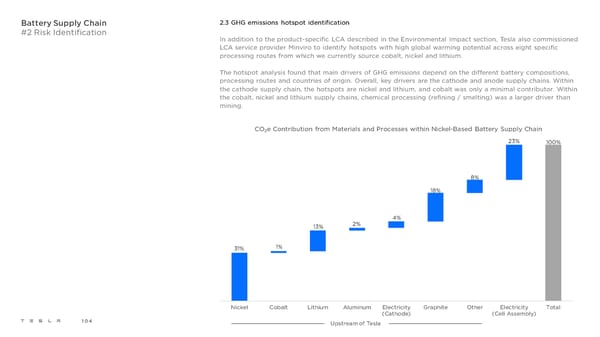Battery Supply Chain 2.3 GHG emissions hotspot identification #2 Risk Identification In addition to the product-specific LCA described in the Environmental Impact section, Tesla also commissioned LCA service provider Minviro to identify hotspots with high global warming potential across eight specific processing routes from which we currently source cobalt, nickel and lithium. The hotspot analysis found that main drivers of GHG emissions depend on the different battery compositions, processing routes and countries of origin. Overall, key drivers are the cathode and anode supply chains. Within the cathode supply chain, the hotspots are nickel and lithium, and cobalt was only a minimal contributor. Within the cobalt, nickel and lithium supply chains, chemical processing (refining / smelting) was a larger driver than mining. CO2e Contribution from Materials and Processes within Nickel-Based Battery Supply Chain 23% 100% 8% 18% 4% 13% 2% 31% 1% Nickel Cobalt Lithium Aluminum Electricity Graphite Other Electricity Total (Cathode) (Cell Assembly) 104 Upstream of Tesla
 Tesla 2021 Impact Report Page 103 Page 105
Tesla 2021 Impact Report Page 103 Page 105